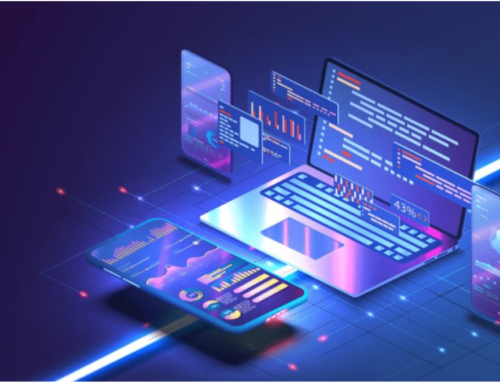The educational industry has witnessed a tremendous boom, especially in the wake of global events that have pushed education towards digital platforms. E-learning apps have become a cornerstone of modern education, providing flexibility, accessibility, and a personalized learning experience. Developing an e-learning app can be a lucrative venture, but it requires careful planning and execution.
In this comprehensive guide, we’ll walk you through the process of developing an e-learning app, ensuring you have all the tools and knowledge needed to create a successful product.
Understanding the Market and Defining Your Niche
Before diving into development, it’s crucial to understand the market and identify your niche. Research the e-learning market to gain insights into current trends, user preferences, and potential competitors. This approach allows you to uncover market gaps and discover opportunities for innovation.
Identify Your Target Audience
Determine who your target audience is. Are you catering to school students, college students, or professionals seeking further education? Understanding your audience’s needs and preferences will guide your app’s features and design.
Analyze Competitors
Study your competitors’ apps to determine what is effective and what falls short. Look at their features, user reviews, and overall user experience. This analysis will help you define your unique value proposition (UVP) and differentiate your app from others.
Define Your Unique Value Proposition
Your UVP distinguishes your app from the competition. It could be a unique feature, a better user experience, or a more comprehensive content offering. Clearly articulating your UVP will assist in attracting and retaining users.
Planning and Conceptualization
With a clear understanding of the market and your niche, it’s time to plan and conceptualize your e-learning app. This phase involves setting goals, outlining features, and creating a basic app structure.
Define Goals and Objectives
What do you want to achieve with your e-learning app? Whether it’s providing quality education to remote areas or offering professional development courses, having clear goals will guide your development process.
Outline Key Features
Based on your research and goals, outline the key features of your app. Essential features might include:
- User registration and profiles
- Course catalogs
- Video streaming
- Interactive quizzes and assessments
- Progress tracking and analytics
- Discussion forums and chat features
Create User Personas and User Stories
Develop user personas to represent your target audience. User personas help you understand your users’ needs, behaviors, and goals. Create user stories to define how different personas will interact with your app.
Sketch Basic App Structure
Outline the basic structure and workflow of your app. Create wireframes to visualize the layout and navigation. This will act as a blueprint for both the design and development phases.
Designing the User Experience (UX) and User Interface (UI)
A well-designed UX and UI are critical for the success of your e-learning app. The design should be intuitive, engaging, and accessible to all users.
Importance of Good UX/UI Design
A good UX/UI design enhances user satisfaction and engagement. It ensures that users can easily navigate your app and access content without frustration.
Create Wireframes and Prototypes
Use tools like Sketch, Figma, or Adobe XD to create wireframes and prototypes. Wireframes are basic layouts that show the placement of elements on each screen. Prototypes are interactive representations that mimic the user experience.
Design Principles for E-Learning Apps
- Accessibility: Ensure your app is accessible to users with disabilities by following design guidelines like WCAG.
- Intuitiveness: The app should be easy to navigate with a clear and logical flow.
- Engagement: Use interactive elements like quizzes, gamification, and multimedia to keep users engaged.
Conduct Usability Testing
Test your designs with real users to gather feedback and identify any issues. Usability testing helps you refine the design and improve the user experience.
Choosing the Right Technology Stack
Selecting the right technology stack is essential for building a robust and scalable e-learning app. Your choice of technologies will affect the app’s performance, security, and development time.
Overview of Technology Stack Components
- Front-end: Technologies like React Native or Flutter for building a cross-platform user interface.
- Back-end: Frameworks like Node.js or Django for server-side logic and database management.
- Database: Options like Firebase or MongoDB for data storage and retrieval.
- Cloud Services: Platforms like AWS or Google Cloud for hosting and scaling your app.
Criteria for Selecting the Technology Stack
- Scalability: Ensure the technology stack can handle growth and an increasing number of users.
- Performance: Choose technologies that offer fast load times and smooth performance.
- Security: Enforce strong security protocols to safeguard user data.
- Development Time and Cost: Consider the development timeline and budget when selecting technologies.
Development Phase
With your planning and design in place, it’s time to start the development phase. This involves setting up the development environment, coding the front-end and back-end, and integrating third-party services.
Setting Up the Development Environment
Prepare your development environment with the necessary tools and software. This includes setting up version control systems like Git and project management tools.
Front-End Development
- Building the User Interface: Code the UI based on your designs. Ensure it’s responsive and works well on different devices.
- Integrating Interactive Elements: Add interactive features like quizzes, video players, and discussion forums.
Back-End Development
- Setting Up Server and Database: Configure the server and database to handle user data and app logic.
- Developing APIs: Create APIs to connect the front-end with the back-end, enabling data exchange and functionality.
Integrating Third-Party Services
- Payment Gateways: Integrate services like PayPal or Stripe for secure payments.
- Notification Systems: Use services like Firebase Cloud Messaging for push notifications.
- Analytics Tools: Implement analytics tools to track user behavior and app performance.
Importance of Version Control
Utilize version control systems such as Git to handle code changes and collaborate with your development team effectively. This ensures a smooth development process and helps track progress.
Testing and Quality Assurance
Testing is a crucial phase to ensure your app is free of bugs and provides a smooth user experience.
Types of Testing Required
- Unit Testing: Test individual components for functionality.
- Integration Testing: Verify that various components function together seamlessly.
- User Acceptance Testing (UAT): Get feedback from real users to identify issues and gather improvement suggestions.
Tools for Automated Testing
Use tools like Selenium or Appium for automated testing. These tools help speed up the testing process and ensure thorough coverage.
Importance of Beta Testing
Conduct beta testing with a small group of real users. Beta testing helps you identify any last-minute issues and gather feedback before the official launch.
Collecting Feedback
Collect feedback from beta testers and make the necessary adjustments. This ensures your app meets user expectations and provides a positive experience.
Deployment and Launch
Once your app is tested and ready, it’s time to launch it to the public. This phase involves preparing for app store submission and planning your marketing strategy.
Preparing for App Store Submission
Follow the guidelines for submitting your app to the App Store (iOS) and Google Play Store (Android). Ensure your app meets all the requirements and is free of bugs.
App Store Optimization (ASO)
Optimize your app’s listing with relevant keywords, compelling descriptions, and high-quality screenshots. ASO enhances your app’s visibility and attracts more downloads. Integrating effective digital marketing strategies can further enhance your app’s reach and engagement, driving more organic traffic to your listing.
Marketing Strategies for a Successful Launch
- Social Media Promotion: Use platforms like Facebook, Twitter, and Instagram to promote your app.
- Influencer Partnerships: Collaborate with influencers in the education sector to reach a wider audience.
- Email Marketing: Send targeted emails to potential users and offer incentives like discounts or free trials.
Post-Launch Activities and Maintenance
Launching your app is just the beginning. Continuous monitoring and maintenance are essential to keep your app running smoothly and retain users.
Monitoring App Performance
Use analytics tools to monitor your app’s performance and user engagement. Track metrics like user retention, session duration, and conversion rates.
Regular Updates and Feature Enhancements
Regularly update your app with new features and improvements based on user feedback. This keeps your app relevant and competitive.
Handling User Feedback and Support
Provide prompt and effective support to users. Address their concerns and incorporate their feedback to improve the app.
Continuous Improvement
Stay updated with industry trends and continuously improve your app. This ensures you provide the best possible experience to your users.
Case Study: Successful E-Learning Apps
Duolingo
Take a look at a successful e-learning app like Duolingo. Duolingo offers engaging language learning through gamification and personalized learning paths. The app uses bite-sized lessons and interactive exercises to keep learners motivated. By analyzing successful apps like Duolingo, we can learn valuable lessons about the importance of user engagement, simplicity, and personalization.
Coursera
Another example is Coursera, a leading platform offering online courses from top universities and companies worldwide. Coursera excels in providing a vast array of courses across different subjects, complete with video lectures, quizzes, and peer-reviewed assignments. It also offers certification programs and degrees, making it a comprehensive learning platform. Key takeaways from Coursera include the importance of high-quality content, collaboration with reputable institutions, and offering a mix of free and paid courses to attract a wide range of users.
By studying successful e-learning apps like Duolingo and Coursera, we can identify best practices and innovative features to implement in our development process. This helps us create a compelling and effective e-learning app that meets the needs of our target audience.
Future Trends of eLearning App Development
As technology continues to evolve, the future of e-learning app development looks promising with numerous innovative trends on the horizon. Staying ahead of these trends can give your app a competitive edge and provide a richer learning experience for users. Here are some important trends to keep an eye on:
Artificial Intelligence and Machine Learning
Artificial intelligence (AI) and machine learning (ML) are transforming the e-learning landscape by providing personalized learning experiences. AI algorithms can analyze user behavior and learning patterns to offer customized content and recommendations, enhancing the learning process. Features like intelligent tutoring systems, AI-driven assessments, and chatbots for instant support are becoming increasingly common in e-learning apps.
To explore how AI can elevate your e-learning app, consider partnering with a leading artificial intelligence development service provider.
Virtual Reality (VR) and Augmented Reality (AR)
VR and AR technologies are set to revolutionize e-learning by providing immersive and interactive learning experiences. These technologies can create realistic simulations and virtual environments, allowing learners to practice skills in a safe, controlled setting. For instance, medical students can perform virtual surgeries, and engineering students can work on virtual machinery, making learning more practical and engaging.
Gamification
Gamification continues to be a significant trend in e-learning, as it increases user engagement and motivation. By incorporating game elements such as points, badges, leaderboards, and challenges, e-learning apps can make learning fun and competitive. This approach not only boosts user retention but also enhances the overall learning experience.
Microlearning
Microlearning focuses on delivering content in small, manageable chunks, which is ideal for today’s fast-paced world. This trend caters to the short attention spans of modern learners and allows them to absorb information quickly and efficiently. E-learning apps are increasingly adopting microlearning modules to provide concise and focused learning experiences.
Social Learning
Integrating social learning features into e-learning apps is becoming more popular. Features such as discussion forums, peer reviews, and collaborative projects allow users to learn from each other and share knowledge. This collaborative approach enhances the learning experience and fosters a sense of community among learners.
Metaverse Integration
The concept of the metaverse is gaining traction in the e-learning sector. The metaverse offers a virtual world where users can interact with each other and the learning material in an immersive environment. This can transform traditional e-learning into a more engaging and interactive experience, allowing learners to attend virtual classrooms, interact with 3D models, and participate in virtual field trips.
For those interested in leveraging this cutting-edge technology, exploring metaverse development services can provide valuable insights and solutions.
Blockchain Technology
Blockchain technology is emerging as a solution for enhancing the security and transparency of e-learning platforms. It can be used to verify credentials, track progress, and secure digital certificates, ensuring the integrity and authenticity of educational achievements.
Data Analytics
Data analytics plays a crucial role in understanding user behavior and improving the learning experience. By analyzing data such as user engagement, completion rates, and assessment results, e-learning apps can gain insights into the effectiveness of their content and make data-driven decisions to enhance learning outcomes.
Embracing these future trends in e-learning app development can help you create innovative and effective learning solutions that meet the evolving needs of learners and stand out in a competitive market.
Conclusion
Developing an e-learning app requires careful planning, a user-centric design, and a robust technology stack. By following this step-by-step guide, you can create an app that meets the needs of your target audience and stands out in the market.
At LABAAP, we specialize in mobile app development and have extensive experience in creating innovative e-learning solutions. Whether you’re interested in leveraging artificial intelligence or exploring metaverse development for educational purposes, our team is here to help you succeed.
Start your e-learning app development journey with confidence and make a significant difference in the education sector.
By following this guide, you’ll be well on your way to developing a successful e-learning app that not only meets the needs of learners but also stands out in a competitive market.






